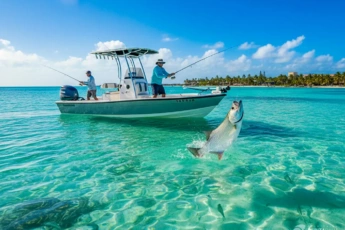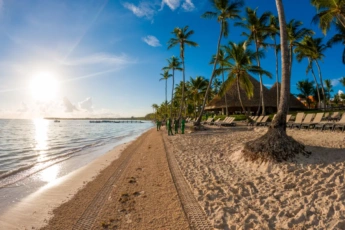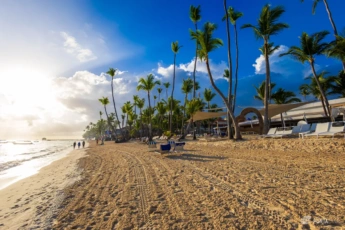Hospitality in the Dominican Republic - What You Need to Know in 2025
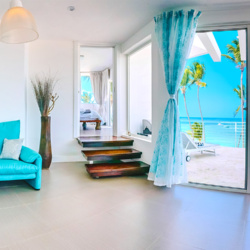
Beach House in the Caribbean – Advantages of Beachfront rentals in Punta Cana
Stop hesitating - it is time to turn your desktop wallpaper into reality. Beautiful beach with palm trees, is not it what most people see when they open their laptop? Exactly! So that is why we are here to…
Read more
Giggster in the Dominican Republic – A New Service to Book Filming Locations 2025
Property management is a challenging business, especially with the whole world affected by the contradictory impact of the COVID-19 pandemic. The Dominican Republic vacation rentals sector has been experiencing an unprecedented slowdown since the spring of 2020. While some…
Read more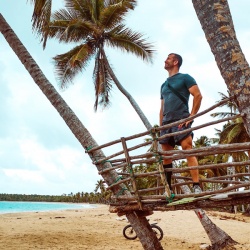
Vasiliy Smetanin – Exclusive representative of Giggster in the Dominican Republic!
A professional speaker and trainer for corporations, Barbara Rubel, said that some people dream of success, while others wake up and work at it. These words could be the credo of Vasiliy Smetanin, who is the founder and CEO…
Read more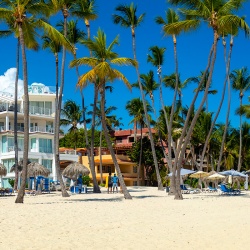
Where to stay in Punta Cana 2025?
You might think that it does not matter where you stay when you are in such a tropical paradise as Punta Cana. However, even here we recommend considering places for stay in advance and choosing the option most convenient…
Read more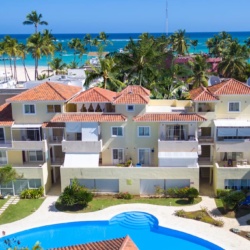
Click Event by Booking.com –
Brief notes and summary
Our team is always studying and attending all events connected to the Hospitality industry. Click Event by Booking.com - it was an amazing experience. As a company, we are looking for a way how to deliver the best services…
Read moreDominican Hospitality – Your Gateway to Caribbean Elegance
The Dominican Republic, known for its breathtaking beaches, vibrant culture, and year-round tropical weather, offers unparalleled hospitality that combines luxury, comfort, and an authentic Caribbean experience. From stunning resorts to eco-friendly lodges and family-friendly accommodations, the country ensures every traveler feels welcomed and pampered.
Whether you’re planning a romantic escape, a family vacation, or a solo adventure, the Dominican Republic’s hospitality sector promises to make your stay unforgettable.
Why choose the Dominican Republic for your stay?
The Dominican Republic is renowned for its exceptional hospitality and diverse accommodations. Here’s why it’s a top choice for travelers:
- World-class resorts and villas. Enjoy the perfect blend of luxury and privacy, with many properties offering all-inclusive packages and exclusive services.
- Warm and welcoming culture. Dominicans are known for their friendliness and passion for sharing their vibrant traditions.
- Diverse accommodation options. From beachfront resorts to eco-lodges nestled in nature, there’s something for every traveler.
- Year-round tropical weather. The sunny climate ensures you can enjoy outdoor activities and relax on the beach any time of the year.
Whether you seek tranquility, excitement, or a cultural immersion, the Dominican Republic offers it all with unmatched hospitality.
Top accommodations in the Dominican Republic
The country boasts a wide range of accommodations tailored to various needs and budgets. Here are some highlights:
Accommodation categories in the DR
| Accommodation type | Features | For whom |
|---|---|---|
| All-inclusive resorts | Gourmet dining, on-site entertainment, and comprehensive amenities. | Families, couples, and luxury travelers. |
| Luxury villas | Private pools, beachfront access, and personalized services. | Groups, honeymooners, and privacy seekers. |
| Eco-lodges | Sustainable stays surrounded by lush landscapes. | Eco-conscious travelers and nature lovers. |
| Budget-friendly apartments | Affordable options with self-catering facilities. | Backpackers and budget-conscious travelers. |
Choose accommodations that align with your preferences to enhance your Dominican Republic experience.
What makes hospitality in the Dominican Republic unique?
The hospitality industry in the Dominican Republic sets itself apart with its attention to detail and cultural integration. Here are the key factors:
- Personalized services. Many hotels and resorts offer tailored experiences, from private chefs to curated excursions.
- Sustainable practices. Eco-friendly accommodations focus on preserving the island’s natural beauty while providing modern amenities.
- Cultural immersion. Enjoy live music, dance performances, and local culinary delights right at your accommodation.
- Seamless connectivity. Most properties provide high-speed internet, making it ideal for digital nomads and remote workers.
In the Dominican Republic, hospitality is more than a service – it's an experience that combines modern luxury with the warmth and richness of its local culture.
Activities and excursions to complement your stay
The Dominican Republic offers a variety of activities to enrich your vacation. Here are some must-try experiences:
- Water sports and beach fun. Snorkeling, diving, and paddleboarding in crystal-clear waters.
- Cultural tours. Visit historic sites like Santo Domingo’s Zona Colonial.
- Nature exploration. Hike through national parks or visit iconic spots like the 27 Waterfalls of Damajagua.
- Nightlife and entertainment. Dance to merengue and bachata in local clubs or enjoy live performances at your resort.
Whether you're seeking heart-pumping thrills or peaceful evenings under the stars, the Dominican Republic offers something for every type of traveler.
Dining and culinary excellence
The Dominican Republic’s hospitality extends to its food, offering an unforgettable culinary journey. Here’s what to savor:
Cuisine in the Dominican Republic
| Dining experience | Description |
|---|---|
| Local dishes | Indulge in iconic Dominican favorites such as la Bandera (the national dish), mofongo (mashed plantains with savory fillings), and fresh seafood specialties. |
| International cuisine | Many resorts and restaurants offer a wide variety of international dishes, catering to global tastes with Italian, Asian, Mediterranean, and American options. |
| Beachfront dining | Relish your meals with a view of the crystal-clear turquoise sea, creating a perfect setting for a memorable dining experience. |
Explore the rich and diverse flavors that reflect the island’s vibrant culture and blend of influences, ensuring your culinary journey in the Dominican Republic is as unforgettable as your stay.
When to visit for the best hospitality experience
While the Dominican Republic is welcoming year-round, some seasons enhance your experience:
Weather differences during peak and low seasons in the DR
| Factor | Peak season (December to April) | Off-season (May to November) |
|---|---|---|
| Time period | December to April | May to November |
| Weather | Ideal weather: warm, sunny, with minimal rain | Warmer temperatures with occasional rain |
| Crowds | High, especially around holidays | Low, quieter beaches and resorts |
| Activities | Festive events, beach activities, excursions | Nature explorations, hiking, eco-tours |
| Prices | Higher (due to demand) | Lower (discounted rates) |
| Special highlights | Christmas & New Year's celebrations, vibrant atmosphere | Less crowded, more relaxation, potential rain showers |
To make the most of your visit, consider the timing that best suits your preferences. No matter when you visit, the Dominican Republic's renowned hospitality ensures an unforgettable stay.
Keynotes
Hospitality in the Dominican Republic is more than just a service—it’s a warm embrace of the Caribbean lifestyle. From luxurious accommodations to personalized experiences, the Dominican Republic offers everything you need for an unforgettable stay. Book your getaway today and experience the heart of the Caribbean!
Frequently asked questions about
hospitality in the Dominican Republic
1. What is tourism like in the Dominican Republic?
Tourism in the Dominican Republic is vibrant and diverse. Known for its stunning beaches, lush landscapes, and rich cultural heritage, the country offers a mix of relaxation and adventure. Punta Cana, Puerto Plata, and Santo Domingo are some of the most popular destinations.
- Beach tourism.The Dominican Republic is home to world-class beaches like Bávaro Beach and Playa Rincón, perfect for sunbathing, water sports, and snorkeling.
- Adventure tourism. Activities like hiking in the Cordillera Central mountains, zip-lining, and whale-watching in Samaná attract nature enthusiasts.
- Historical and cultural tourism. Santo Domingo, the capital, offers a deep dive into history with its Colonial Zone, a UNESCO World Heritage site featuring cobblestone streets and centuries-old architecture.
- All-inclusive resorts. The country is renowned for its luxurious all-inclusive resorts, particularly in Punta Cana, which cater to families, couples, and solo travelers alike.
Tourism plays a significant role in the economy, and the Dominican Republic is considered one of the most welcoming destinations in the Caribbean.
2. What is the food culture in the Dominican Republic?
Dominican food culture is a flavorful blend of Spanish, African, and Taíno influences, creating a cuisine rich in tradition and diversity. Meals often emphasize fresh, locally-sourced ingredients and vibrant flavors.
- La Bandera Dominicana (The Dominican Flag). A traditional meal consisting of rice, beans, and meat, often served with fried plantains or avocado.
- Mangú. Mashed green plantains, typically served for breakfast alongside fried eggs, cheese, and salami.
- Sancocho. A hearty stew made with meats and root vegetables, often enjoyed during celebrations.
- Seafood. Being an island nation, seafood like red snapper, lobster, and shrimp are popular, particularly in coastal areas.
- Street food. Empanadas, chimichurri burgers, and tostones (fried plantains) are common street foods.
- Drinks and desserts. Refreshing beverages include Morir Soñando (a mix of orange juice and milk) and rum-based cocktails. Desserts like Dulce de Leche and Habichuelas con Dulce (sweet bean pudding) are staples.
Food in the Dominican Republic is more than sustenance—it’s a way to bring families and communities together.
3. Are Dominican Republic people friendly?
Yes, Dominican people are known for their warmth, hospitality, and friendliness. Visitors often remark on the welcoming nature of locals, who are eager to share their culture and traditions.
- Community spirit. Family and community are at the heart of Dominican culture, and this extends to how they treat guests. Whether you’re staying in a resort or exploring small towns, locals are usually eager to assist and engage with visitors.
- Music and dance. Dominicans often express their friendliness through music and dance, especially during festivals and social gatherings. Merengue and Bachata, both UNESCO Intangible Cultural Heritage elements, are national prides.
- Safety. While some areas require caution, many tourists feel safe due to the hospitality and attentiveness of locals.
- Language. While Spanish is the primary language, many Dominicans in tourist areas speak English and are patient with visitors learning Spanish.
This genuine kindness makes the Dominican Republic feel like a second home for many travelers.
4. Is the Dominican Republic a good place to party?
Absolutely! The Dominican Republic is one of the Caribbean’s top destinations for nightlife and parties, offering everything from lively beach clubs to traditional music-filled bars.
- Cities like Santo Domingo and Punta Cana are known for their vibrant nightlife scenes, featuring everything from upscale clubs like Coco Bongo to casual beachfront bars.
- All-inclusive resorts often provide nightly entertainment, including live shows, dance performances, and themed parties.
- Merengue and Bachata dominate the music scene, but you’ll also find reggaeton, salsa, and international hits at most venues.
- Events like the Dominican Carnival and Merengue Festival are excellent opportunities to experience the celebratory spirit of the Dominican people.
- Many coastal towns host beach parties, complete with bonfires, DJs, and local rum-based cocktails.
Whether you’re looking for an energetic club or a relaxed evening by the water, the Dominican Republic has something for every partygoer.
5. What is the culture like in the Dominican Republic?
Dominican culture is a dynamic blend of Taíno, African, and European influences, with traditions deeply rooted in family, music, and religion.
- Family plays a central role in Dominican life, and gatherings are often lively and full of laughter.
- Merengue and Bachata are cornerstones of Dominican culture, with locals often gathering to dance and celebrate.
- The majority of Dominicans are Roman Catholic, and religious traditions and holidays like Easter and Christmas are celebrated with enthusiasm.
- Baseball, or pelota, is the most popular sport, with many Dominicans excelling in Major League Baseball.
- Local art includes vibrant paintings, handcrafted jewelry, and the famous Larimar gemstone, unique to the Dominican Republic.
- As mentioned earlier, food is a vital aspect of the culture, bringing families and communities together.
The Dominican Republic’s culture is best experienced firsthand through its festivals, music, and interactions with its people.
6. What is the Dominican Republic ranked in tourism?
The Dominican Republic consistently ranks as one of the top tourist destinations in the Caribbean. According to recent statistics:
- The Dominican Republic leads the region in visitor numbers, welcoming over 8 million tourists annually, with Punta Cana being a primary gateway.
- The country is often listed among the best destinations for beaches, luxury resorts, and cultural experiences.
- It’s recognized for eco-tourism activities, such as whale watching in Samaná and hiking in the Cordillera Central.
- Frequently ranked as a top destination for affordable yet luxurious resort stays.
The Dominican Republic’s growing reputation as a safe, accessible, and culturally rich destination contributes to its high ranking in tourism worldwide.
7. What do Dominicans eat daily?
Daily Dominican meals are rooted in simplicity, freshness, and bold flavors, often featuring staples like rice, beans, plantains, and meat. A typical day’s diet might look like this:
Breakfast:
- Mangú – Mashed green plantains, often served with fried eggs, salami, and cheese.
- Fresh fruit like papaya, mango, or pineapple.
- Coffee is a must-have for most Dominicans.
Lunch (La Bandera Dominicana):
- Rice and beans with chicken, beef, or pork.
- Side dishes like salad, fried plantains (tostones), or avocado slices.
- This is the largest and most important meal of the day.
Dinner:
- Similar to lunch but lighter, often featuring leftovers or a sandwich.
- Soups, such as Sancocho, might be served during colder months or special occasions.
Dominican cuisine is not only delicious but also reflects the country’s cultural diversity.
8. What does mangu mean?
Mangú is a traditional Dominican dish made from boiled and mashed green plantains. It holds a special place in the country’s culinary culture, often served as a breakfast staple.
- Etymology. The term “mangú” is believed to have African origins, linked to the influence of enslaved people brought to the island during the colonial era.
- Ingredients. Green plantains, butter or oil, and a pinch of salt. Some variations include garlic for added flavor.
- Serving style. Mangú is typically paired with Los Tres Golpes (The Three Hits): fried salami, fried cheese, and fried eggs.
- Symbolism. Beyond being a dish, mangú represents comfort food and is often associated with family gatherings and Dominican identity.
Mangú’s simplicity and versatility make it a beloved staple in Dominican homes.
9. What are Dominicans best known for?
Dominicans are best known for their rich culture, vibrant music, and stunning natural landscapes. Key highlights include:
- Music and dance. Merengue and Bachata are internationally recognized music styles originating in the Dominican Republic. UNESCO has listed Merengue as an Intangible Cultural Heritage of Humanity.
- Beaches. The country is famous for its pristine beaches, such as those in Punta Cana, Samaná, and Puerto Plata.
- Sports. Baseball is a national obsession, with many Dominicans excelling in Major League Baseball (MLB).
- Hospitality. Dominicans are renowned for their warm, welcoming nature and emphasis on community.
- Cuisine. Signature dishes like La Bandera Dominicana, Mangú, and Sancocho reflect their culinary heritage.
Dominicans are also celebrated for their resilience and passion, as seen in their vibrant festivals and rich traditions.
10. Is the Dominican Republic safe for girls?
The Dominican Republic is generally safe for girls and solo female travelers, especially in tourist-focused areas, but it’s important to take precautions, as you would in any destination.
- Tourist areas. Resorts in Punta Cana, Cap Cana, and La Romana are considered very safe, with security measures in place.
- Transportation. Use official taxis, ride-sharing apps, or hotel-arranged transport to ensure safety.
- Cultural respect. While locals are generally friendly, women may encounter some unsolicited attention. A polite but firm response is usually effective.
Safety tips:
- Avoid isolated areas, particularly at night.
- Keep valuables secure and avoid displaying wealth.
- Dress modestly when visiting rural areas or religious sites.
For female travelers seeking an enjoyable and secure experience, planning ahead and staying in reputable accommodations will ensure a memorable trip.
11. Is the Dominican Republic safe for tourism?
The Dominican Republic is generally considered safe for tourism, especially in well-known destinations such as Punta Cana, Cap Cana, La Romana, and Samaná. The government and tourism industry prioritize visitor safety. Key points include:
- Popular areas are heavily monitored, with dedicated tourist police (Cestur) ensuring a safe environment.
- Most accommodations have robust security measures in place, including gated properties and on-site security staff.
- Petty theft, such as pickpocketing, can occur in crowded areas. Travelers are advised to avoid displaying valuables and to use secure transportation.
- The Dominican Republic has made significant strides in health safety, including measures for clean drinking water and food handling in tourist zones.
By practicing basic travel precautions, most tourists enjoy a safe and memorable experience.
12. What is the quality of life in the Dominican Republic?
The quality of life in the Dominican Republic varies based on factors like location, income, and access to resources.
- Urban areas like Santo Domingo and Punta Cana offer modern amenities, healthcare, and entertainment.
- Rural areas may lack infrastructure and access to quality education or healthcare.
- Relatively low compared to many Western countries.
- Groceries, housing, and dining out are affordable for both locals and expatriates.
- The Dominican culture emphasizes a laid-back, community-oriented way of life.
- Outdoor living is common, with abundant opportunities to enjoy beaches, hiking, and cultural festivals.
While the middle class is growing, economic disparities persist, with some communities struggling with poverty. However, tourism and foreign investment are improving overall standards.
13. What are the Dominican habits?
Dominicans have many unique cultural habits that reflect their vibrant and warm way of life. Some notable habits include:
- A kiss on the cheek (or air kiss) is common when greeting someone, especially among friends and family. Handshakes are also used in formal settings.
- Colmados (local corner stores) is a popular gathering spot for buying snacks, drinks, and socializing.
- Dominó is a favorite pastime, played passionately with friends and family.
- Lunch is the largest and most important meal of the day.
- Afternoons often include a “siesta” in rural areas, especially during the hottest hours.
- Dominicans frequently dance to Bachata and Merengue, whether at parties, festivals, or casual get-togethers.
- Catholic traditions are deeply ingrained, with many attending church regularly and celebrating religious holidays.
These habits reflect the Dominican emphasis on family, community, and enjoying life to the fullest.
14. What do Dominicans value the most?
Dominicans hold several core values that define their culture and way of life:
- Family ties are paramount, with extended families often living close together and supporting one another.
- Dominicans are known for their welcoming nature and strong sense of community.
- Music and dance are both integral to daily life, with Bachata and Merengue celebrated as national treasures.
- Religion, particularly Catholicism, plays a significant role in guiding moral and social values.
- Dominicans value their ability to overcome challenges with optimism and hard work.
These values are reflected in their culture, traditions, and interactions with others.
15. Is the Dominican Republic a poor or rich country?
The Dominican Republic is considered a developing country with a mixed economic profile.
Economic highlights:
- The largest economy in the Caribbean and Central America.
- Significant income is generated from tourism, agriculture, and remittances from Dominicans living abroad.
- Rapid GDP growth in recent years, driven by tourism and foreign investment.
Poverty levels:
- Despite economic growth, around 20% of the population lives below the poverty line, particularly in rural areas.
- Wealth inequality is a notable issue, with a sharp contrast between affluent urban centers and underdeveloped rural regions.
Middle-class growth:
- Urbanization and improved access to education have expanded the middle class.
- Investments in infrastructure and tourism have created jobs and raised living standards in key areas.
While the Dominican Republic faces challenges, it continues to make strides in development, making it an attractive destination for tourism and expatriates alike.

